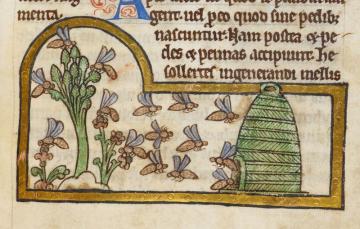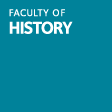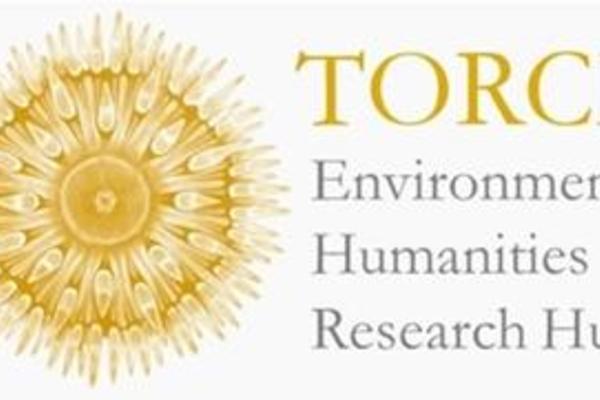Environmental History
Please follow this link to join the Oxford Environmental History mailing list

Environmental history investigates humans’ changing ecological entanglements over time. Its practitioners work over different time periods and geographical regions and draw on methodological ideas and practices from various scholarly traditions such as history, archaeology, geography, visual art and the natural sciences.
This interdisciplinary approach is what makes environmental history such an exhilarating field, yet it can also be what divides it. Environmental historians often belong to different departments and faculties, and at Oxford they are yet to share a sub-institutional affiliation. Hence, they are not always informed of relevant work done by their colleagues within the same University.
The Oxford Environmental History Network wishes to foster a virtual community of environmental historians in Oxford. The aim of the network is threefold:
- To connect researchers confronting similar conceptual and methodological challenges, even if working across different regions and time periods
- To showcase environmental history research being undertaken at Oxford and elsewhere
- To publicise relevant events and opportunities occurring both at Oxford as well as internationally
The Science of Why Human Excrement Matters. Pierre Leroux and the circulus
Multispecies Interactions in bridging Folk and Biomedical Knowledge: hookworm, roundworm and wormweed in Jamaica, 1913-1936
Reclaiming Land for the Future: Coal, Environmentalism, and Population in Post-1945 Britain
Past Events
Filmic Humanities and Film-Making-As-Research - A Medical Humanities and HSMTE Workshop
Paths to ecological thinking: Reflections on situating social relations in energy and environmental context
Energy, Environment and Society: In conversation with Dr Matthew N Eisler
Roundtable: Geotrauma, Emergency Histories, and Sacrifice Zones: Medieval Historians in the Anthropocene
Radhakrishnan Memorial Lecture Series 2025: The Developmental State in Climate Crisis
Engineering the Environment and Imagining Nature in the Early Modern World
2025 Cressida Jervis Read Seminar - Along the Thread of the Mosquito Ovary: Apprehending Malarias Lost and Regained
Beautifying the City, Poisoning the Lady. About an Odd Victorian Scientific Conversation (1869)
Of Herbs and Pharmaceuticals: Rethinking the Rise of the Pharmaceutical Industry after the Plant Turn
HSMTE Workshop with Jean-Baptiste Fressoz - More and More and More: An All-Consuming History of Energy
Singapore pineapples: catch-cropping, Chinese capitalists, and the colonial state, 1900s–1930s
“Archives of Loss and Wonder”: Writing a History of Fossil Heritage in South Asia The Inaugural Cressida Jervis Read Seminar
Red Squirrels, Big Data, and the Birth of Behavioral Ecology
Victorian Women and Algology: The Case of Margaret Scott Gatty (1809–1873)
How Anthropocene Made Modernity
Historical research in the time of the Anthropocene: can climate data help us read the past (and, if so, how)?
Historical Perspectives on Climate, Disasters and Migration
Environmental Humanities

The Environmental History Working Group (EHWG) runs informal meetings for those interested in studying the past in ways that recognize the interactions and interconnectedness of animals, plants, humans, other beings, and the environment. We make space to talk about exciting developments in our fields, new ideas and approaches, and to have interdisciplinary conversations. We try to keep discussions and presentations informal, and encourage anyone at all interested in these kinds of approaches to join our meetings, regardless of research specialism or presumed existing knowledge. Our sessions are mainly attended by graduate students and undergraduates who were considering writing a dissertation or embarking on further study in the field, but all are welcome.
For further information or to join the EHWG mailing list, please email environmentalhistoryworkinggroup-owner@maillist.ox.ac.uk.
You can also find our schedule on OxTalks.
Meeting Details:
Meetings are held each term in odd weeks at the History Faculty (Schwarzman Centre, Radcliffe Observatory Quarter). Meeting details will be released at the beginning of each term.
Convenors:
Ryan Mealiffe (DPhil History) ryan.mealiffe@history.ox.ac.uk
EHWG Michaelmas Term 2025 Schedule
Time: Thursdays 12:30-14:00, unless otherwise stated
Meeting Location: Room 20.421, History Hub, Schwarzman Centre, Radcliffe Observatory Quarter, Woodstock Road, Oxford OX2 6GG, unless otherwise stated
Week 1 (16 October)
Stephanie Holt (DPhil History)
Curious Minds: Gilbert White and Thomas Pennant
This talk builds on an exhibition of the same name held earlier this year by the AHRC funded Curious Travellers Project (curioustravellers.ac.uk/en), of which I am a part, and hosted at the Gilbert White Museum in Hampshire. While the project as a whole considers Thomas Pennants entire body of work, my focus, and that of this talk, centres on the conversations between the two naturalists, Rev. Gilbert White (1720-1793) and Thomas Pennant (FRS 1727-1798), and how that developed their work and legacy..
Week 3 (30 October)
Madeleine Fyles (PhD Anthropology, University of Toronto)
More than Kindling: Algarrobo Posts and Social Memory on the Peruvian North Coast
Wooden posts have been a critical element of Andean architecture within the Jequetepeque valley on the North Coast of Peru, particularly in the Moche site of Huaca Colorada (650-850 CE). However, wooden posts have frequently been interpreted in the archaeological canon as architectural features with little connection to ritual procedures except in their inclusion as an inert element of ritual architecture. Utilizing new analyses of wooden posts made from the algarrobo tree (Neltuma pallida), this paper identifies trends in the use and recycling of wooden posts at Huaca Colorada during the Middle Horizon, shedding light on the role of the algarrobo tree as more than a simple resource by examining how the algarrobo tree may have participated in the ritual, political, and social structures at Huaca Colorada as revered ancestor within the local ontology. This research explores the use and perception of algarrobo trees within the complex of Huaca Colorada and the role of trees in establishing or promoting culturally specific perceptions of place, ancestry, and memory.
Week 5 (13 November)
Ryan Mealiffe (DPhil History)
What are White Storks (Ciconia ciconica) Doing in High and Late Medieval Calendars?
Each year, White Storks (Ciconia ciconia) migrate north to breeding grounds in Europe and back south to their wintering grounds, as far afield as sub-Saharan Africa. These long-distance migrants are large, unmistakable in plumage and behavior, and synanthropic, living near humans and benefitting from anthropogenic environments. How did medieval communities in proximity to stork breeding colonies interpret the comings and goings of these birds? This talk presents preliminary findings on the development of interspecies, place-based temporalities between people and storks in northern France and the Low Countries. This region was a growing population center for the species and produced some of the liveliest renderings of storks in manuscripts c. 1250 to 1515. Focusing on depictions of storks in calendars and psalters produced around the Upper Rhine and drawing upon both zooarchaeological and written records of White Storks, I examine the possibility that depictions of storks’ arrival, departure, breeding, and behavioral choices may have acted as pictorial gauges for a combination of environmental, temporal, and climatic variables, calibrating formulaic occupational and liturgical schedules for seasonal variability by synchronizing them with the rhythm of the avian annual cycle.
Week 7 (27 November) - Room 20.513
Speaker to be announced
Title forthcoming
People
Those listed below have an interest in both teaching and research surrounding the topic of of environmental history.





















